The assassin snail (Anentome helena, formerly Clea helena), native to South-West Asia, is commonly known as the “killer snail.” These small freshwater snails have become a popular choice among aquarium enthusiasts for their remarkable ability to control unwanted pest snail populations. If your aquarium is overrun with nuisance snails, introducing an snail is one of the most effective and natural solutions to manage the infestation.
Assassin snails actively hunt down and feed on smaller pest snails, making them a valuable addition to many tanks. With their efficient snail control and minimal impact on other tank inhabitants, it’s no surprise that Anentome helena remains a favorite for those seeking a low-maintenance, biological method of keeping snail numbers in check.
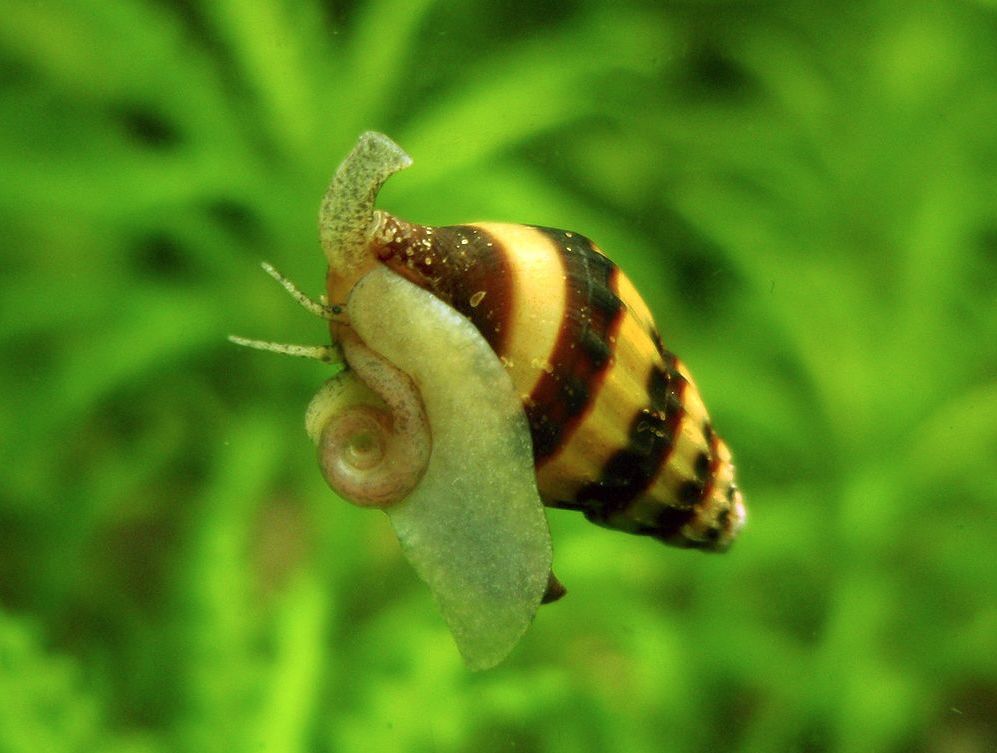
Contents
Do assassin snails eat other snails?
Sure!
Some snail species, due to their rapid breeding, can quickly become a nuisance in aquariums, disrupting the delicate balance of the ecosystem. Often, these snails enter the tank unintentionally, hitchhiking on plants. Common intruders include species like the great ramshorn (Planorbarius corneus), Physa fontinalis, and various members of the Acroloxus family. Others, such as Malaysian trumpet snails (MTS), are often introduced deliberately to help aerate the substrate, but can easily overpopulate.
While manually removing these snails may offer a temporary solution, it rarely addresses the problem entirely. Completely ridding your tank of invasive snails without disturbing the substrate and plants is nearly impossible.
However, the assassin snail offers a natural solution to this problem. Here’s why it’s an effective option:
- they prey on overpopulated species like ramshorn snails and MTS, helping to control their numbers.
- They don’t burrow deeply into the substrate, though they may partially bury themselves.
- Their diet does not include live fish or shrimp, making them safe tank mates for most aquatic inhabitants.
- Assassin snails don’t feed on aquarium plants, leaving your greenery intact.
- Breeding them is easy and doesn’t require any special tank conditions.
By introducing assassin snails, aquarium owners can maintain balance without resorting to chemical treatments or constant manual removal.
Habitat in the wild
In the wild, Anentome helena inhabit shallow, clear waters across South-East Asia, including Thailand, Malaysia, Singapore, and Indonesia. They thrive in rivers, streams, and various freshwater environments, preferring slow-moving or stagnant waters like marshes, ponds, and ditches. These snails favor areas with dense vegetation and substrates rich in organic matter.
As bottom-dwellers, assassin snails are commonly found in sandy or muddy substrates, where they use their foot to burrow and seek shelter. Their diet primarily consists of other snails, both live and decaying, making them effective scavengers and predators. This adaptability to a diet of live and decaying matter contributes to their popularity as aquarium inhabitants.
They are opportunistic hunters, actively searching for and consuming other snails to satisfy their dietary needs. Understanding their natural habitat helps aquarium enthusiasts appreciate why these snails are such effective and beneficial additions to their tanks.

Description
Size: Adult assassin snails (Anentome helena) typically reach about 0.5 inches in length, though individual sizes may vary slightly.
Physical description: The assassin snail features a conical shell with a pointed apex. The shell’s color ranges from light to dark brown or yellowish-brown, adorned with distinct dark brown spiral bands or stripes. This shell includes an operculum—a hard, plate-like structure that seals the shell’s opening, providing protection and moisture retention.
The snail’s body is gray with dark spots and is covered by a thin, soft layer of skin. It has an elongated, retractable foot used for movement and burrowing. Extending from the front of its body is a proboscis—a siphon-like structure used for sensory functions and feeding. This proboscis features an elongated breathing tube that stays stretched forward as the snail moves.
Feeding & hunting: When hunting, the assassin snail uses its long, extendable proboscis to deliver a harpoon-like radula—a rasping tongue lined with sharp teeth—into its prey. This radula injects a toxin that immobilizes and paralyzes the prey. The toxin, containing enzymes that break down soft tissues, allows the snail to consume its meal effectively.
Lifespan: Assassin snails can live for several years under optimal conditions, typically between 2 to 3 years. Their lifespan can vary based on environmental factors, diet, and overall care. Providing a suitable aquarium environment, maintaining high water quality, and offering a balanced diet are crucial for their longevity. Genetics and individual health also play significant roles in their lifespan.
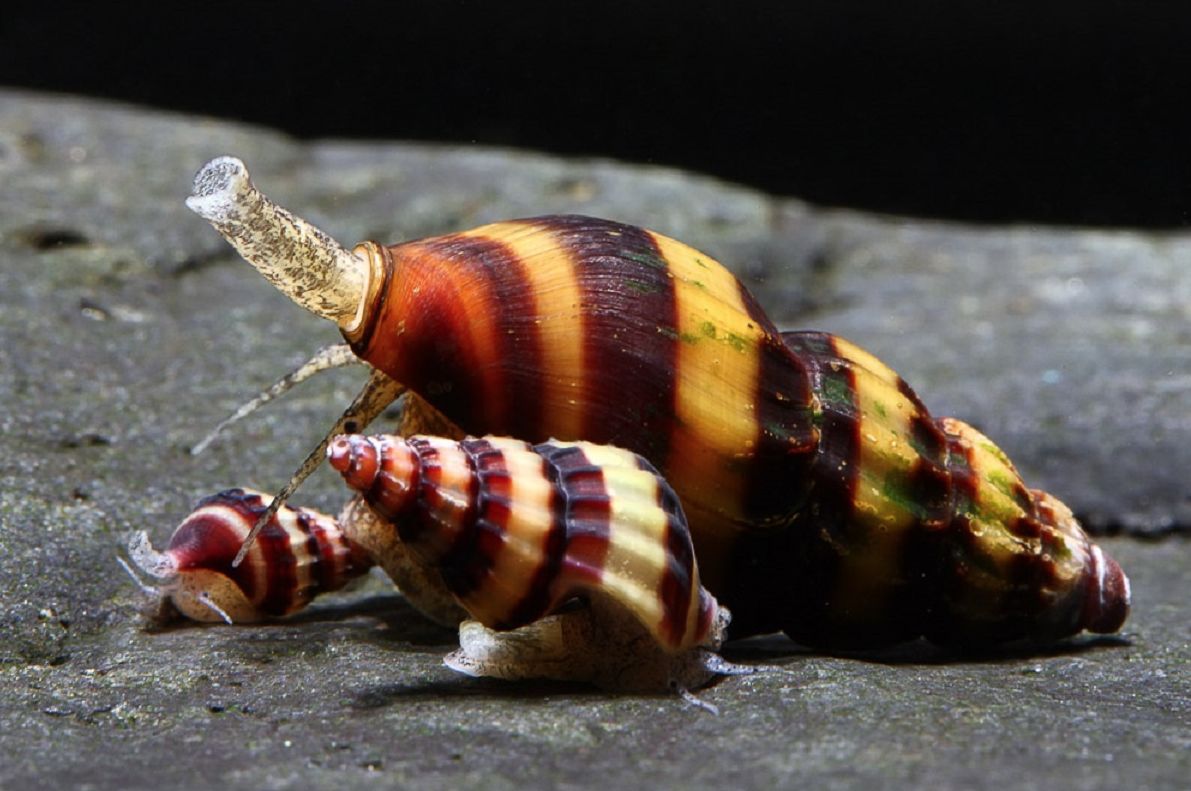
| Characteristic | Description |
|---|---|
| Scientific Name | Anentome helena; Clea helena |
| Common Names | Assassin snail, helena snail |
| Size | Up to 0.5 inch (15-17 mm) in length |
| Shell Shape | Cone-shaped |
| Shell Color | Yellowish-brown with dark brown bands |
| Native Habitat | Freshwater rivers, streams, and slow-moving waters in Southeast Asia |
| Behavior | Active predators, hunt and consume other snails |
| Prey | Small snails, including pest snails like bladder snails |
| Compatibility | Generally peaceful, but may prey on small shrimp or baby snails |
| Minimum Tank Size | 10 gallons (38 liters) |
| Substrate Preference | Sandy or fine gravel |
| Water Parameters | pH: 6.5-7.5, Temperature: 72-82°F (22-28°C) |
| Feeding | Primarily feed on other snails; can be supplemented with sinking pellets or tablets |
| Breeding | Live-bearers, females give birth to live snails |
| Geographic Range | Southeast Asia |

Care and keeping in a tank
Care Requirements
Caring for assassin snails is relatively straightforward, as they are hardy and adaptable. However, like most snails, they require water with a certain level of mineral content to maintain their shell health. They do not thrive in very soft water, which lacks essential minerals.
Water Adaptability
Assassin snails are fully aquatic and are not suited for life out of water. Unlike some snails that can breathe air due to a lung-like structure called “pulmonate,” assassin snails rely on water for respiration. While they can survive brief periods outside water—such as during tank maintenance or transfer—it is important to keep them moist and minimize their exposure to air. Prolonged exposure can lead to dehydration, adversely affecting their health and survival.
Tank Size
Assassin snails are small and do not require an excessively large tank. A minimum tank size of 10 gallons (38 liters) is typically recommended. This size allows them to move around comfortably, hunt for prey, and explore their environment.
If you plan to keep multiple assassin snails or introduce other tank inhabitants, such as fish or shrimp, consider a larger tank. A larger tank helps manage the increased bioload and provides ample space for all the inhabitants to thrive. It also helps maintain stable water parameters and reduces the risk of overcrowding-related stress and health issues.
Providing an appropriately sized tank not only supports the overall well-being of your assassin snails but also enhances the stability of their aquatic environment.
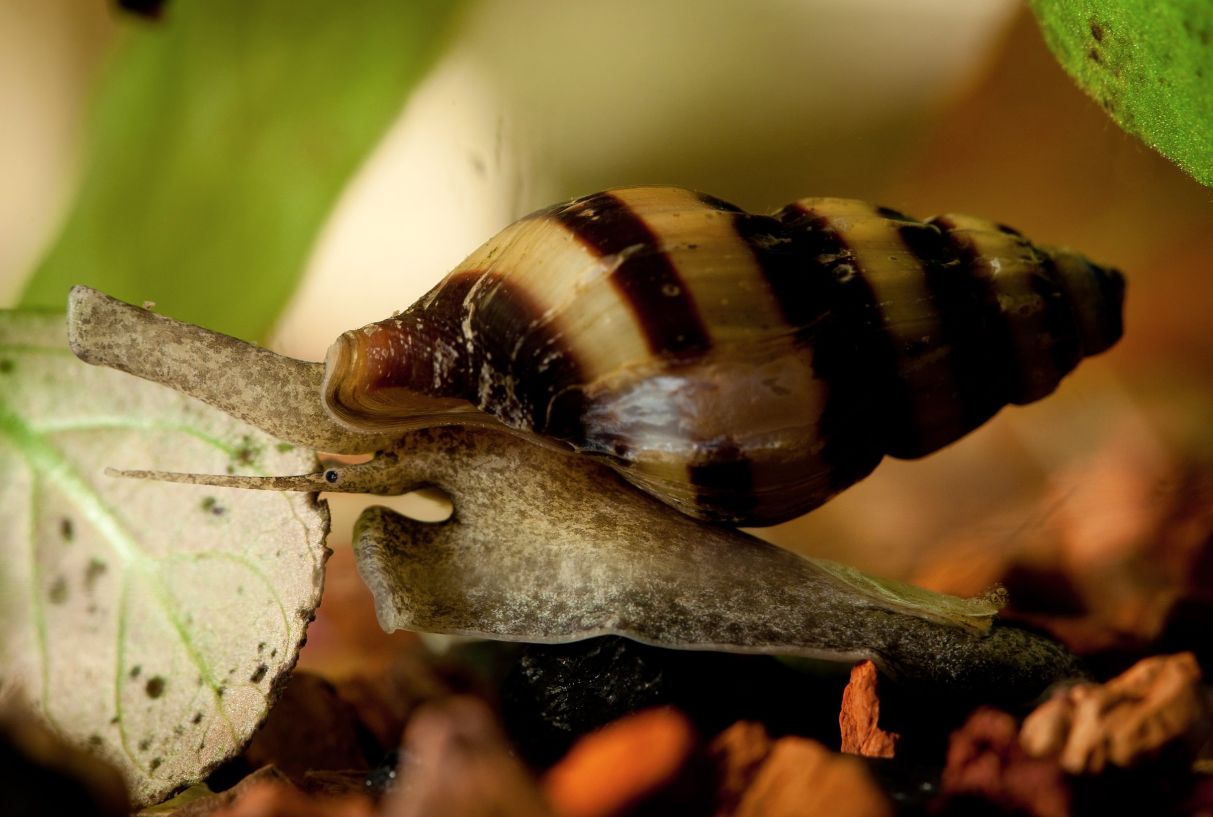
Water parameters
Assassin snails are freshwater creatures and do not require brackish water, although they can tolerate it fairly well. While their exact water parameters are not critical, maintaining slightly acidic to neutral conditions is beneficial. The ideal pH range for snails is between 6.5 and 7.5.
These snails are quite adaptable to varying water hardness levels. They can thrive in both soft and moderately hard water. For optimal health, aim for a water hardness range of 4 to 12 dGH (degrees of general hardness).
The temperature range that suits assassin snails is between 72°F and 82°F (22°C to 28°C). Keeping the water within this temperature range supports their metabolic processes and overall well-being.
Substrate
Given their natural behavior, the ideal substrate for assassin snails is sand or small pebbles, ideally sized between 0.5 and 1.5 mm. Juvenile snails, like Malaysian trumpet snails (MTS), sift through the upper substrate layer to find food remnants. They do not require any special feeding beyond what is provided by their environment.
Assassin snails are notably fast movers on any surface, especially when hungry. After feeding, they often disappear quickly into the substrate, as they are adept at burrowing. This behavior helps them find shelter and maintain their natural habits within the tank.
Feeding
They are carnivorous and primarily feed on other snails. They are highly effective in controlling pest snail populations in aquariums.
Assassin snails actively hunt and consume other snails, including common pest snails such as bladder snails (Physella acuta), Malaysian trumpet snails (Melanoides tuberculata), and ramshorn snails (Planorbidae family). They are especially efficient at targeting and eliminating small snails. Hungry snail doesn’t care that the majority of its time MTS spends in a bottom substrate – the predators watch them when they are coming out on a surface and eat them. Buccal opening of assassin snails is a tube using which they suck out their victim from its shell.
However, snails don’t feed on apple snails (Ampularia spp.) eagerly, even the small ones they eat only in extreme cases. Apple snails and nerite snails are larger than the typical prey of assassin snails.
Food mainly consists of other snails, but if there are absent in a tank, diet can be complimented with other feed with high protein content. Frequently they may be fed with frozen blood worm and or sinking pelletsdesigned for carnivorous invertebrates. These foods should be rich in animal proteins to meet their nutritional needs.
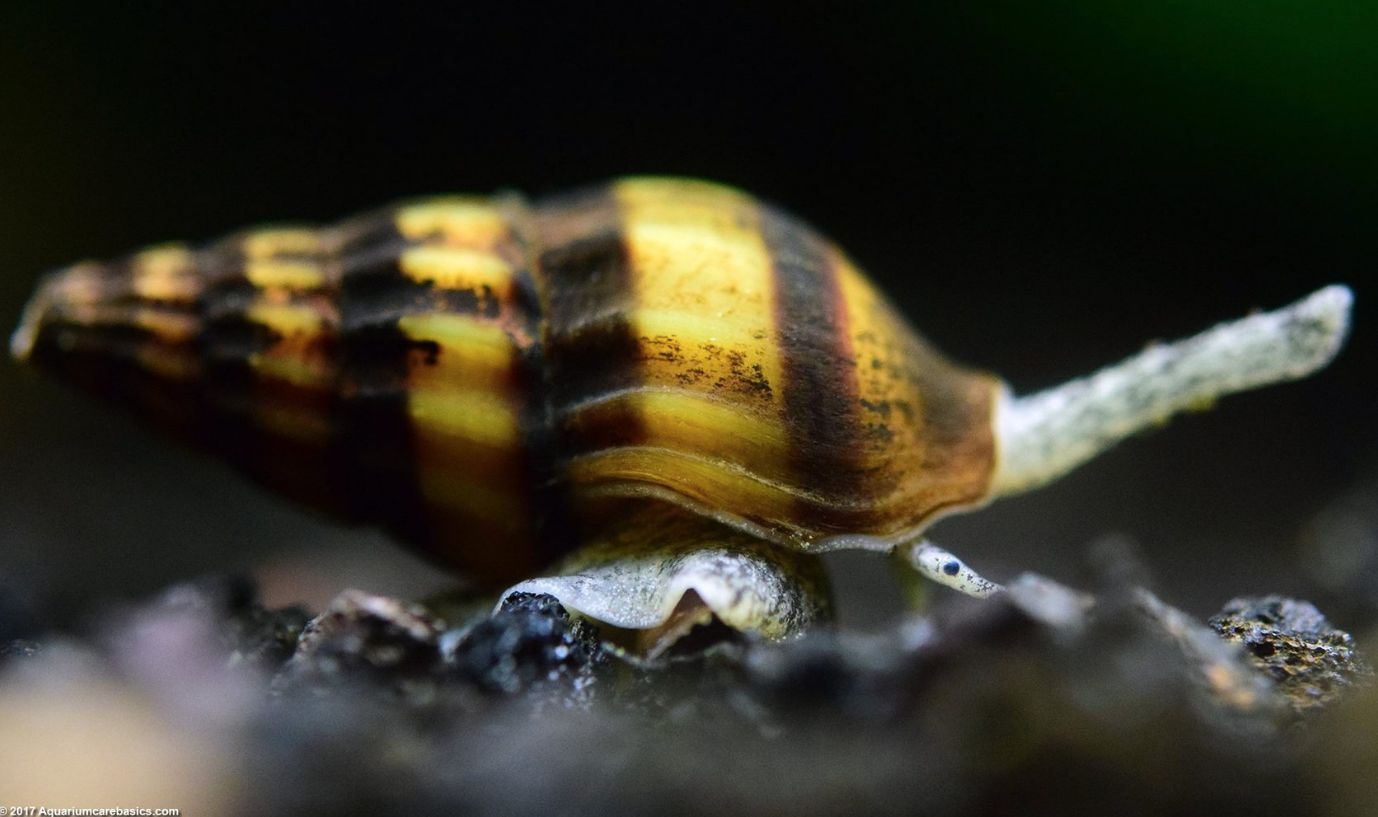
Tank mates
They are predators only towards other small snails and they show no interest to fishes, shrimps and tank plants. Providing ample hiding spots, such as dense vegetation, rocks, or caves, can offer the shrimp places to retreat and seek refuge from the snails. This can help minimize the chances of direct contact between the snails and shrimp.
As we know, assassin snails don’t feed on adult apples snails and neritina snails – since their shell sticks very tight to the surface and Anentome helena can’t get the shellfish out of it.
While they are not typically cannibalistic, there have been reports of instances where assassin snails have been observed preying upon and consuming other assassin snails. Cannibalism among snails is more likely to occur in situations where there is limited availability of their primary prey, such as bladder snails or Malaysian trumpet snails. When food sources are scarce, snails may resort to cannibalism as a means of survival.
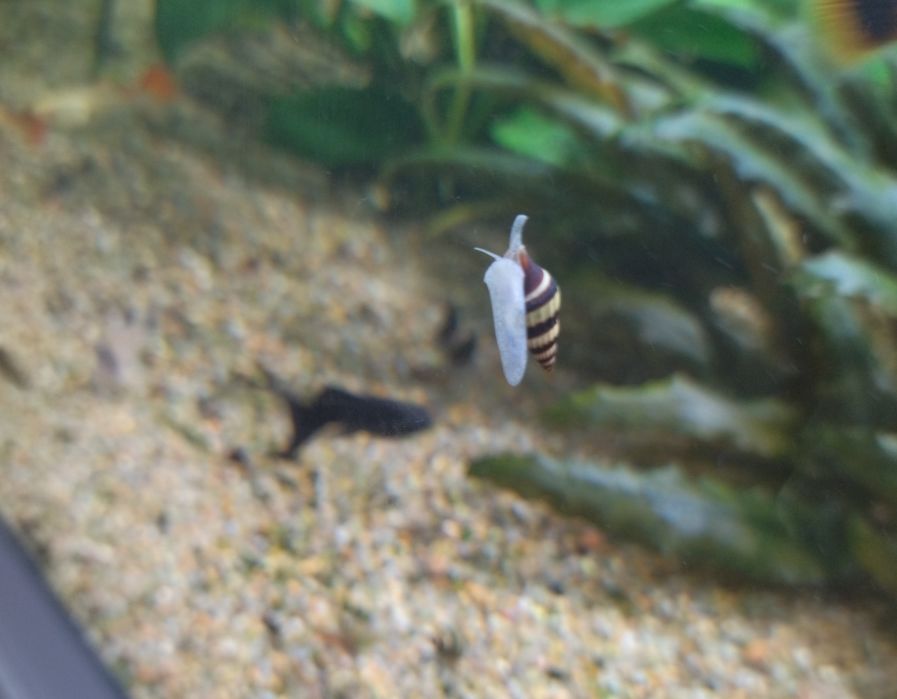
gender
Assassin snail are heterosexual, meaning they have distinct male and female individuals. But it’s almost impossible to define its gender by its appearance, so the only way to obtain their posterity is to keep several species in a aquarium. In general, female snails tend to be slightly larger and more robust compared to males. However, this difference in size may not be very pronounced, and it can vary between individuals.
Breeding
To initiate breeding, it’s essential to have a male and a female assassin snail. While it can be challenging to determine the gender of individual snails, maintaining a small group of snails increases the likelihood of having both males and females.
Assassin snails engage in a courtship ritual before mating. Couple getting ready for breeding is clearly seen in a tank – they move around the tank together one on another for weeks and they don’t get apart even when feeding. After successful mating, the female snail will lay small, gelatinous egg capsules. These capsules usually contain a few dozen eggs and are attached to various surfaces in the aquarium.
Both when keeping snails and when breeding the parameters of tank water aren’t very important, however it was noticed that when the water temperature is below 20 C (68 F) the snails temporally stop laying the eggs.
For successful breeding it’s necessary to provide the breeding species with calm surroundings, give them enough feed and free them from intrusive tank mates, such as prawns and active fishes, especially cichlids, tiger вarb.
After coupling female lay eggs one at time on solid objects. They look like small boats with a yellowish bulb (0.1 mm in diameter) inside. Provided with optimal tank conditions one can get about 300 species less than is a year.
The eggs of assassin snails undergo an incubation period that usually lasts around 2-4 weeks, depending on the temperature and other environmental factors. Eggs hatching takes from 21 to 30 days and after that the juveniles hide away in the bottom substrate and live there till they are about 3-4 mm large.
Assassin snails have the potential to reproduce rapidly if conditions are favorable. Keep in mind that an uncontrolled increase in the snail population may affect the overall balance of the aquarium. Regularly monitor and manage the population size to prevent overcrowding.